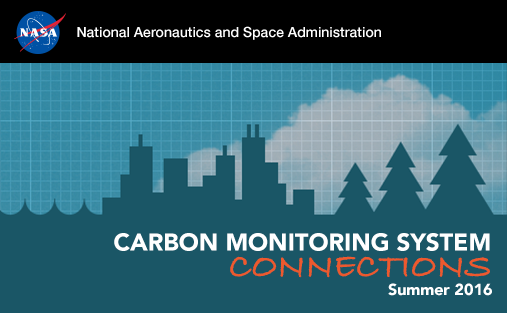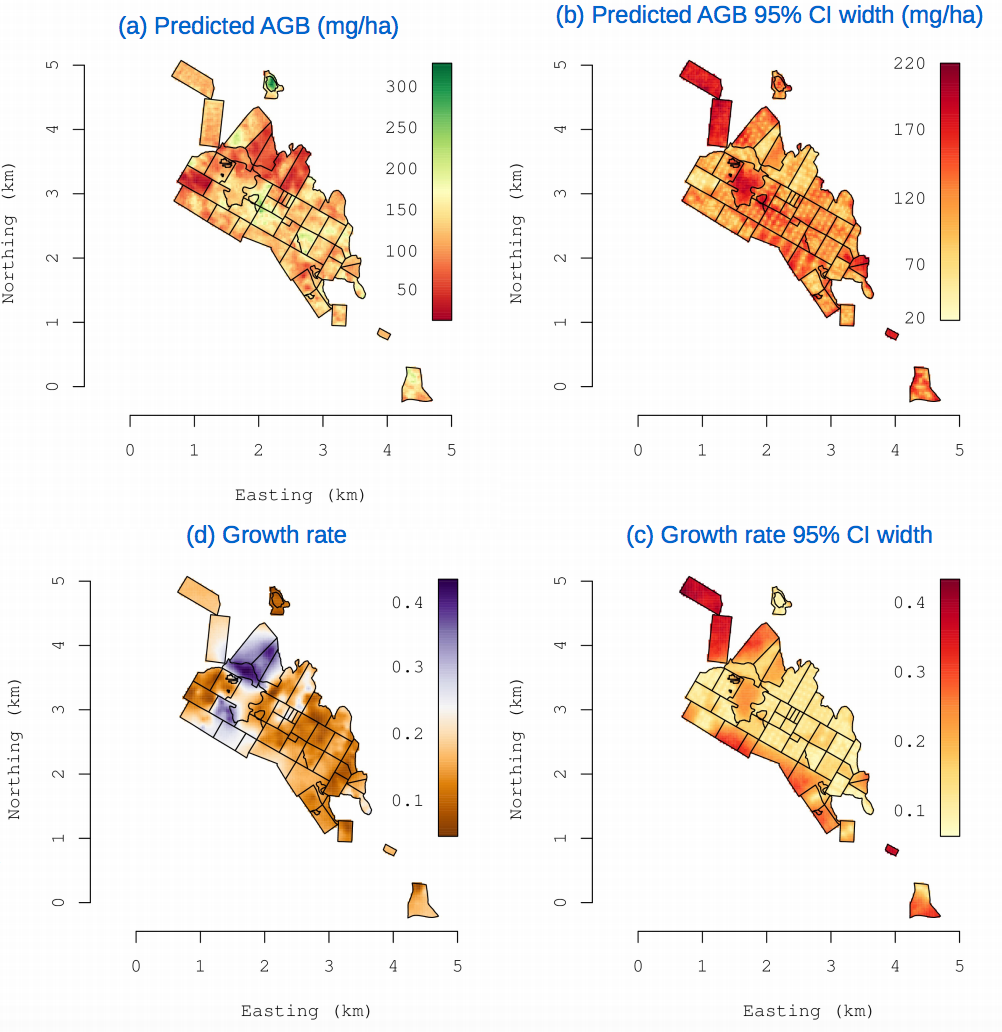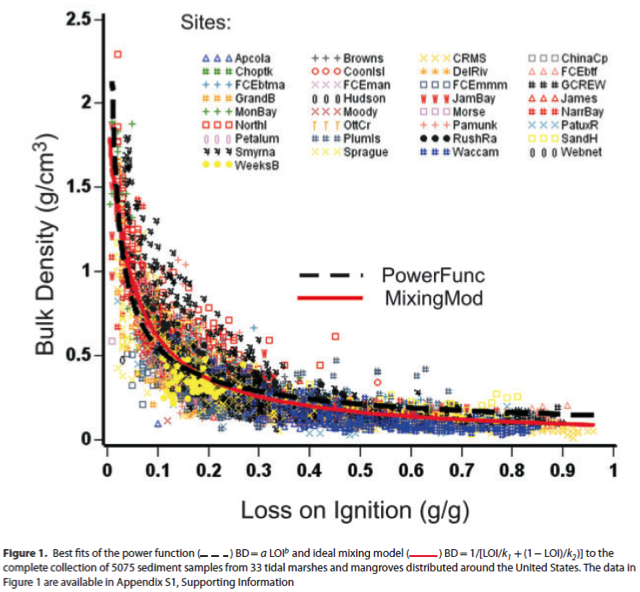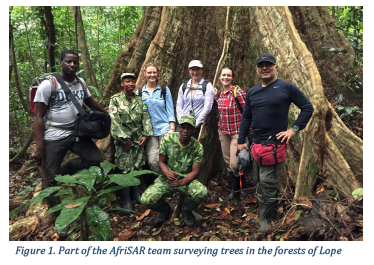
The NASA Carbon Monitoring System (CMS) is forward-looking and designed to make significant contributions in characterizing, quantifying, understanding, and predicting the evolution of global carbon sources and sinks through improved monitoring of carbon stocks and fluxes. Initiated and as directed through a Fiscal Year (FY) 2010 appropriation, the goal of the CMS Project is to prototype the development of carbon monitoring capabilities needed to support U.S. needs for monitoring, reporting, and verification (MRV). NASA’s approach emphasizes exploitation of the satellite remote sensing resources, computational capabilities, scientific knowledge, airborne science capabilities, and end-to-end system expertise that are major strengths of the NASA Earth Science program. Through user engagement activities, the project aims to be responsive to the needs of stakeholders working to improve MRV frameworks. To learn more about the NASA-CMS plan, click here.
Today, I am pleased to report that NASA-CMS is maturing into one of the newest and most exciting initiatives in Earth Sciences. Since inception, the CMS project has progressed from a small number of relatively large pilot and scoping studies, to a diverse project of >50 projects and >100 science team members prototyping carbon monitoring and Monitoring Reporting and Verification MRV technologies for land, atmosphere, and ocean carbon stocks and fluxes around the world. In addition, our Science Team is working across projects in six Working Groups (Atmospheric Validation, Data, External Communications, MRV, System Framework, Uncertainties/Algorithm Assessment), and we are in the midst of developing content for the NASA Hyperwall, and preparing the upcoming Science Team and AGU Meetings. To help stay abreast of recent activities and upcoming opportunities, our External Communications Working Group has led development of this new CMS newsletter. I invite you to read it, share it, and contribute to future issues. As always, we welcome your feedback.
Finally, it is with a heavy heart that we acknowledge the recent loss of Dr. Molly Macauley. Molly was a friend, a colleague, and an influential scientist. She was a pillar in the formation of the CMS program, having a special role in both the project's development and function. She was a Science Definition Team Member, a Science Team Member, and an Invited Speaker at the first AGU Session on CMS held last year. Molly will be deeply missed.
Sincerely,
George Hurtt
CMS Science Team Leader
Welcome from CMS Communications
The goal of CMS External Communications is to engage the broader Earth science community with the scientific and research efforts of CMS. Through this engagement, we want to ensure that the community understands the nature, quality, and utility of NASA CMS science information and data products, and that CMS scientists are responsive to these needs through ongoing research.
Keeping in line with our goal of communication, our group will be releasing quarterly CMS newsletters that will highlight recent news and information about the NASA Carbon Monitoring System and its engagement with the user community. Feel free to distribute the newsletter to your colleagues that you feel may be interested.
In addition to the newsletter, we have also made a number of changes to the CMS website to help with better connecting users with important updates as well as making easier access to available data in CMS archives. To be added to the email list or to would like to submit comments about the newsletter or website, please contact support@cce.nasa.gov
New features on the homepage of the Web site are listed below.
New Search tools available from Search![]()
- Project Profiles
- Publications
- Data & Products (includes all projects)
NASA Headquarters Update
From May 31 to June 3, 2016, NASA and ESA sponsored a Biomass Cal-Val Workshop at the Smithsonian Institution in Washington, DC. The idea was to explore the potential for coordinated Cal-Val activities for the major forest biomass satellite missions; GEDI, NISAR, BIOMASS, and ICESat-2. More specifically, the objectives were to develop synergism of the mission observations and products; develop joint CAL/VAL approaches and share resources; engage the global ground biomass observation community. Approximately forty-five ecologists and remote sensing scientists attended from all corners of the world.
Several missions with potential pertinence to CMS reach major milestones over the last few weeks.
The GEDI mission to the International Space Station (ISS) passed its Key Decision Point C (KDP-C), also referred to as the Confirmation Review, on June 9, 2016. This allows GEDI to proceed to Phase C, Final Design and Fabrication. It also fixes the Agency Budget Commitment for the mission. GEDI will use wave-form lidars to measure the three-dimension structure of forests for a two-year period. It is manifested for launch on SpaceX-18, nominally scheduled for launch in December 2018.
ECOSTRESS is also an ISS mission and it passed its KDP-C on December 10, 2015. It is currently manifested on SpaceX-15, nominally scheduled for launch in April 2018. ECOSTRESS is a thermal sensor that will detect the timing, location, and predictive factors leading to plant water uptake decline.
OCO-3 is a third mission to the ISS. OCO-3 is designed to collect the space-based measurements needed to quantify variations in the column averaged atmospheric carbon dioxide (CO2) dry air mole fraction, XCO2, with the precision, resolution, and coverage needed to improve our understanding of surface CO2 sources and sinks (fluxes) on regional scales (≥1000 km) and the processes controlling their variability over the seasonal cycle. It passed its KDP-C on May 12, 2016 and is manifested on SpaceX-17, nominally scheduled for launch in October 2018.
Additionally, NISAR is an L-Band and S-Band SAR satellite designed to measure forest biomass and map the extents of forest disturbance, wetland area, and agricultural croplands at global scales. It passed its Preliminary Design Review on June 23, 2016 and is scheduled for KDP-C on August 23, 2016. It is scheduled for launch sometime in the 2021 timeframe.
The PACE mission (Plankton, Aerosol, Cloud, ocean Ecosystems) passed its KPD-A review on June 15, 2016 allowing it to proceed to Phase A (Concept and Technology Development and Formulation). PACE will provide systematic observations and continuity for ongoing ocean color research, systematic observations of aerosol and clouds in the climate record, and enhanced ocean color remote sensing over a broad spectrum.
All these missions should enable major scientific advances for the further development of prototype carbon monitoring systems on land, air and sea.
Hank Margolis, Program Manager, Terrestrial Ecology
Ken Jucks, Program Manager, Upper Atmosphere Research
Kathleen Hibbard, Program Scientist, Terrestrial Ecology
Paula Bontempi, Program Manager, Ocean Biology and Biogeochemistry
 On June 2, 2016 the CMS Applications Team hosted Dwight Gledhill, Deputy Director of NOAA’s Ocean Acidification Program at NASA’s Goddard Space Flight Center. The talk was part of the continuing efforts of the CMS Applications Policy Speaker Series to bring together end users of carbon data and decision-makers with the broader CMS science community. “Ocean Acidification From Space” surveys the different projects being undertaken by NOAA's Ocean Acidification Program, focusing in the ones where satellite products are currently being adopted or would offer considerable benefit. The talk guides CMS scientists focusing their work in ocean biomass and ocean-atmosphere flux to understand what are the data needs and limitations in ocean acidification monitoring, and to identify potential opportunities between NASA and NOAA OAP.
On June 2, 2016 the CMS Applications Team hosted Dwight Gledhill, Deputy Director of NOAA’s Ocean Acidification Program at NASA’s Goddard Space Flight Center. The talk was part of the continuing efforts of the CMS Applications Policy Speaker Series to bring together end users of carbon data and decision-makers with the broader CMS science community. “Ocean Acidification From Space” surveys the different projects being undertaken by NOAA's Ocean Acidification Program, focusing in the ones where satellite products are currently being adopted or would offer considerable benefit. The talk guides CMS scientists focusing their work in ocean biomass and ocean-atmosphere flux to understand what are the data needs and limitations in ocean acidification monitoring, and to identify potential opportunities between NASA and NOAA OAP. You can have access to the slides and recording of this and past Policy Speaker Series talks here.
- Engagement with over 40 potential end users of LiDAR data and CMS data products in the state of Delaware, representing state agencies, counties, federal agencies, academia, and commercial entities.
- Feedback from different state agencies and counties regarding their LiDAR data needs and potential uses of the products.
- Initial discussions with the Delaware Department of Technology and Information for hosting the CMS data products in the FirstMap website, where the products will be available to all interested Delaware stakeholders to download at no cost.
Featured Publications

June 2016
Regional Column CH4(& CO2) Observations by Off-the-Shelf Mobile Solar Spectrometers Detect Reductions in Dairy Emissions in Chino

May 2016
Modeling forest biomass and growth: Coupling long-term inventory and LiDAR data.
doi:10.1016/j.rse.2016.04.014

May 2016
Process-based hierarchical models for coupling high-dimensional LiDAR and forest variables over large geographic domains
http://arxiv.org/abs/1603.07409

May 2016
Hierarchical Nearest-Neighbor Gaussian process models for large geostatistical datasets.
doi:10.1080/01621459.2015.1044091

April 2016
Linking Satellite and Soil Data to Validate Coastal Wetland 'Blue Carbon' Inventories
doi:10.1002/2015EF000334
View All Featured Publications
NASA, Partner Space Agencies Measure Forests in Gabon

A contingent of NASA airborne instruments and scientists on the ground has joined colleagues from space agencies in Gabon and Europe this month to study the dense African tropical forests in Gabon.
Gabon, a Central African country slightly smaller than the state of Colorado, is home to one of the most pristine rainforests on the planet. During the two-week-long NASA campaign, a collaboration with a European Space Agency (ESA) mission called AfriSAR, researchers collected various forest measurements – not only from Gabon's rainforest but also from the country's wetlands, mangrove forests and savanna. ESA launched the first part of the AfriSAR field campaign in Gabon in July 2015, when teams led by the French national aerospace research center collected radar and field measurements of the country's forests. Now NASA and the German Aerospace Center (DLR) have joined the second leg of the campaign. There is also a follow-up campaign to the mangroves in July 2016.
The data will help prepare for and calibrate four current and upcoming spaceborne missions for NASA, ESA and DLR that aim to, among other goals, better gauge the role of forests in Earth's carbon cycle.
Read more
CMS Science Team Meeting
- The 5th Annual NASA CMS Science Team Meeting will be held at the UCAR Center Green Conference building November 14–16, 2016 in Boulder, Colorado. The three-day meeting will begin with a one day CMS Applications Workshop that will include stakeholders.
- Registration for the meeting will open later this summer. For NASA employees and contractors, this is not a reportable conference so registration in NCTS is not required. All Projects funded in 2013 and 2014 are expected to have a representative attend to give a presentation and poster. New projects funded in 2016 will be expected to give a 2 minute speed talk.
CMS Session at American Geophysical Union Fall Meeting
If you are interested in presenting at this session, you can submit an abstract to Session ID# 13493.
View Seminar Details
Sep 9, 2016— Applications Workshop and Tutorial for Tri-State Area Stakeholders: Maryland, Delaware, and Pennsylvania | Newtown Square, PA
Nov 14–16, 2016— NASA CMS Science Team Meeting| Boulder, CO
Nov 14, 2016– NASA CMS Science Team and Applications Workshop 2016: Linking CMS Products to Decision Makers and Stakeholders
Dec 12–16, 2016— AGU Meeting | San Francisco, CA
North American Carbon Program: Exact dates TBD for March 2017 in the Washington DC area.
Lead: Dr. George Hurtt, email
Assistant: Christine Kang, email
NASA Carbon Cycle & Ecosystems Office
Chief Support Scientist: Dr. Peter Griffith, email
Support: support@cce.nasa.gov
NASA HQ CMS Project Officers
Dr. Ken Jucks, email
Dr. Hank Margolis, email
Dr. Kathleen Hibbard, email
|
|
||||
|
|||||
| PLEASE DO NOT REPLY TO THIS MESSAGE. Visit us on the web >> |
| Please E-mail support if you have any questions or comments. >> |